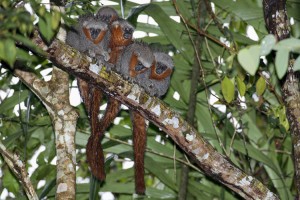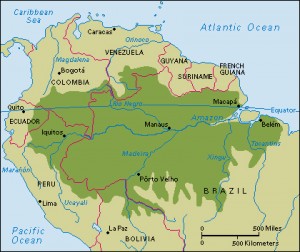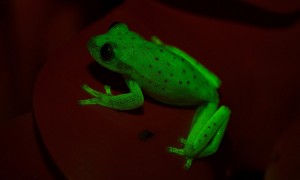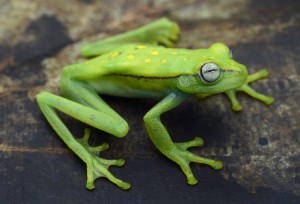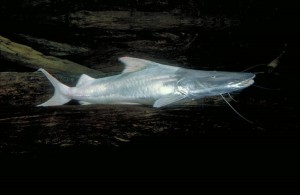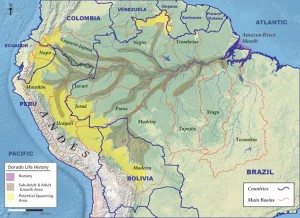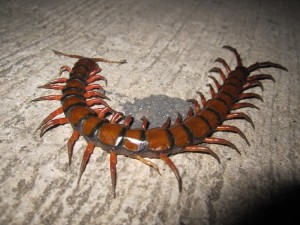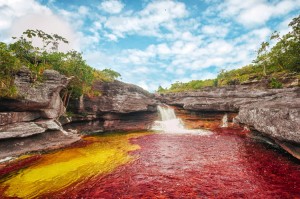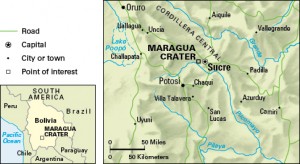The Chapecoense Tragedy
Tuesday, November 28th, 2017November 28, 2017
One year ago today, on Nov. 28, 2016, LaMia Flight 2933 crashed in the mountains of northwestern Colombia, killing 71 people. The dead included nearly the entire Chapecoense soccer team from Chapecó, Brazil. The disaster broke the hearts of family, friends, and fans alike. Today, soccer stadiums throughout South America went silent to remember the dead on the crash’s first anniversary.

On Dec. 3, 2016, Brazilian air force members carry the coffin of a Chapecoense player during a memorial service for the team’s players, coaches, and staff killed in the crash of Flight 2933. Brazilian President Michel Temer was among the more than 20,000 mourners at the rain-soaked service at Chapecó’s Arena Condá. Credit: © Buda Mendes, Getty Images
Brazilians refer to soccer as o jogo bonito (the beautiful game). The phrase was popularized by Brazilian soccer superstar Pelé, who played for Santos FC (Football Club) in the 1950’s and 1960’s. Santos, located in a suburb of São Paolo, has long been one of the best teams in Brazil’s top league, the Campeonato Brasileiro (Brazilian Championship). Chapecoense is a league rival of Santos, but low-budget Chapecoense is virtually starless and has earned few honors. In 2016, however, the team—often called Chape—had a fine season and made an unlikely run through the Copa Sudamericana, an annual tournament among the best professional soccer clubs of South America. In November, Chape was preparing to play for the Copa championship for the first time in team history. The club and its fans were understandably excited as the team left home for the opening match against Atlético Nacional at its home park in Medellín, Colombia. Chape took a commercial flight from São Paolo to Santa Cruz de la Sierra, Bolivia, where the team picked up a charter flight to Medellín with LaMia, a small local airline. That flight never made it to José María Córdova International Airport, however; the plane crashed in the mountains short of its destination on the night of Nov. 28, 2016. The crash killed 71 of the 77 people on board. The flight roster included players, coaches and staff, aircrew, journalists, and guests.
The crash wiped out nearly the entire Chape team and devastated the families and fans back in Chapecó. The disaster also rattled the entire soccer world, where teams regularly fly to distant matches and—like most people who travel routinely—take flight safety for granted. Teams all around the world honored Chapecoense by observing a minute of silence before matches, and many teams in South America added Chape patches to their own team uniforms. Atlético Nacional—Chape’s would-be opponents in the Copa final—insisted that Chapecoense be named that year’s tournament champion, and on December 5, it was. Like Chape, Nacional had never won the Copa Sudamericana.
LaMia Flight 2933 took off from Santa Cruz de la Sierra at 6:18 p.m. local time—it was running a bit late. To make up time, the pilot scrubbed a scheduled refueling stop at Cobija on Bolivia’s northern border. A Bolivian aviation official urged the pilot to keep the original flight plan because the 4 hour and 22 minute nonstop journey to Medellín was the same length as the plane’s maximum flight range. The pilot ignored the official, as well as an international rule requiring aircraft to carry enough fuel for 30 minutes of flight beyond the destination.
As Flight 2933 neared Medellín, its scheduled touchdown was delayed to allow another flight to make an emergency landing. Just minutes after entering a holding pattern, the pilot began requesting help from air traffic controllers. In distress, he reported that the plane was “in total failure, total electrical failure, without fuel.” Contact with Flight 2933 was then lost.
At 9:59 p.m. local time—4 hours and 41 minutes after takeoff—Flight 2933 crashed into Cerro Gordo mountain near La Unión, a town just southeast of Medellín. Rescuers arrived soon after, finding wreckage strewn over an area 330 feet (100 meters) in diameter. The plane had split in two upon impact, but it did not explode or burn: there was no remaining fuel. Ironically, the empty fuel tanks allowed six people to survive the crash: three players, two aircrew (a flight attendant and a flight technician), and one journalist. Blame for the crash fell on the pilot of LaMia Flight 2933, who was also a part owner in the charter airline. Bolivia suspended LaMia’s operating certificate after the crash, and legal action was taken against several LaMia executives.
On December 3, more than 20,000 people attended a memorial service at Chapecó’s Arena Condá, Chapecoense’s home stadium. In a steady downpour, coffins containing the bodies of the Chape players, coaches, and staff killed in the crash were carried into the stadium and placed upon a platform beneath a banner reading “Força Chape” (Strength to Chape). The mourners, most bedecked in Chape’s green and white colors, then formed an immense line that wound through the stadium as people paid final, close-up tributes to the players who had meant so much to them.
On Jan. 21, 2017, a reconstituted Chapecoense returned to the pitch to begin a new season. The team received its Copa Sudamericana champions medals at an emotional ceremony that also remembered the dead of Flight 2933. Chape crash survivors Alan Ruschel (recovered from spinal surgery) and Hélio Neto (who suffered severe trauma to his lungs, skull, and thorax) have since rejoined the team. Goalkeeper Jakson Follmann, who lost a leg in the crash, hopes to represent Brazil in paralympic soccer.

